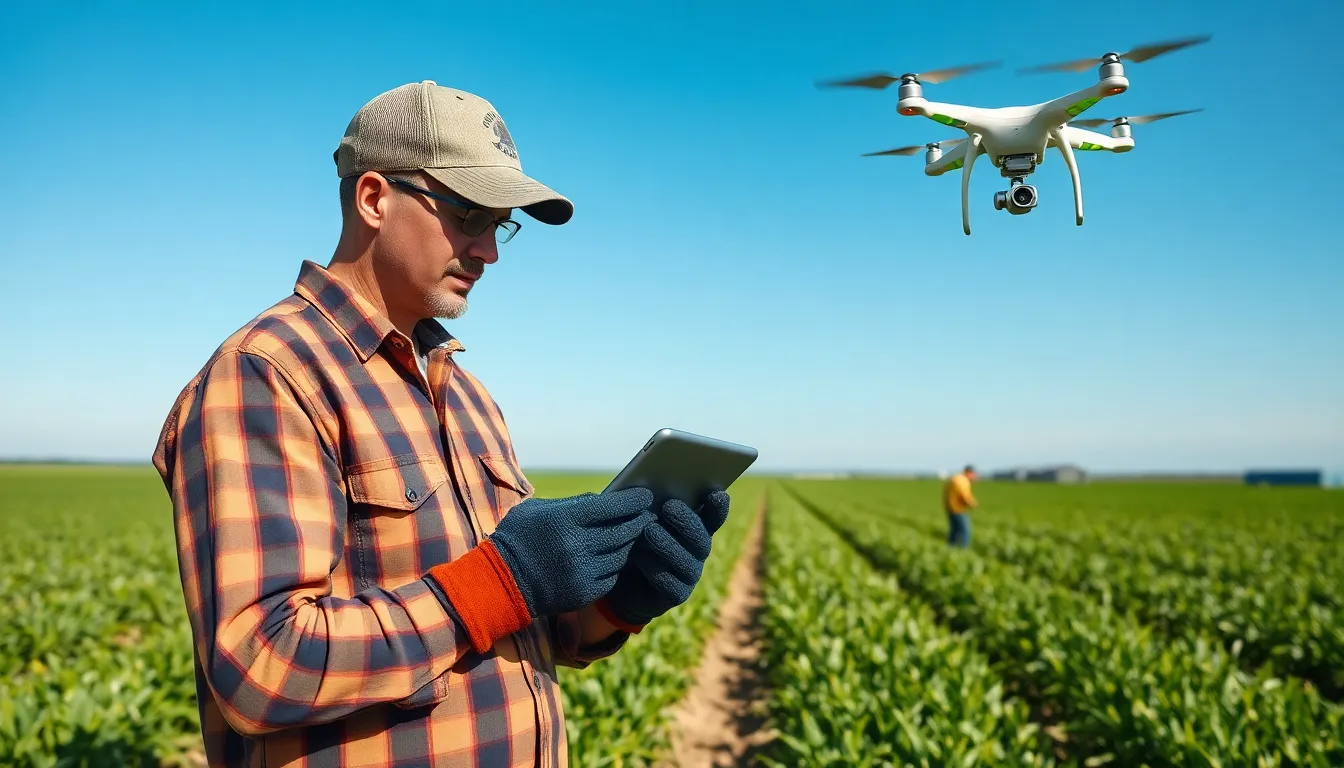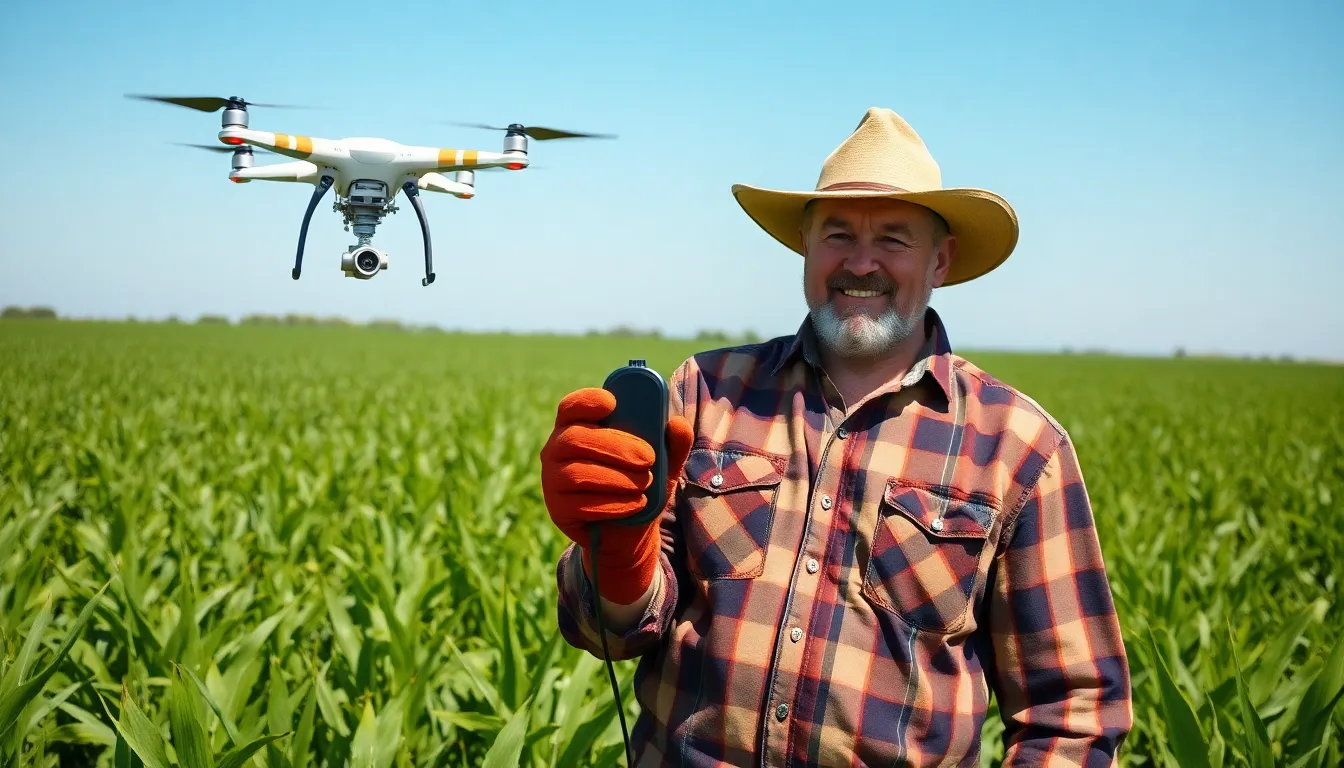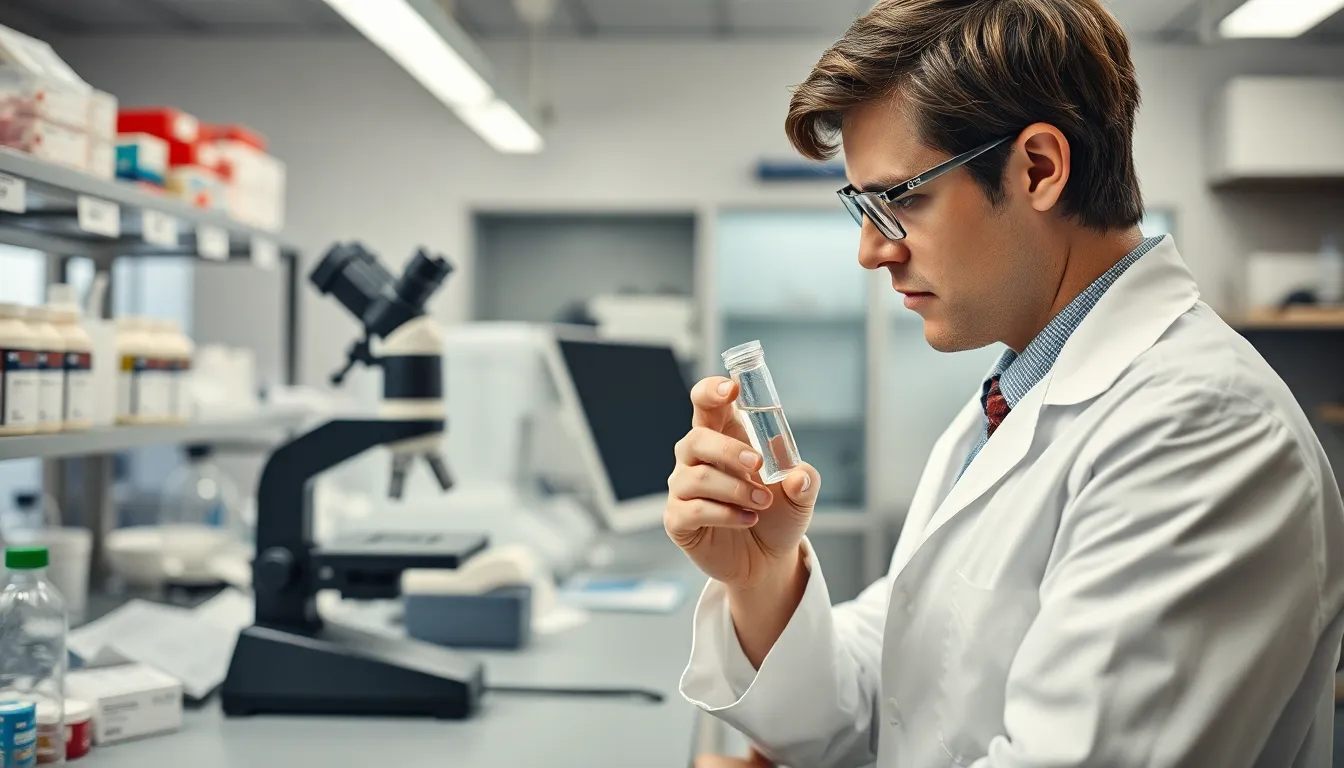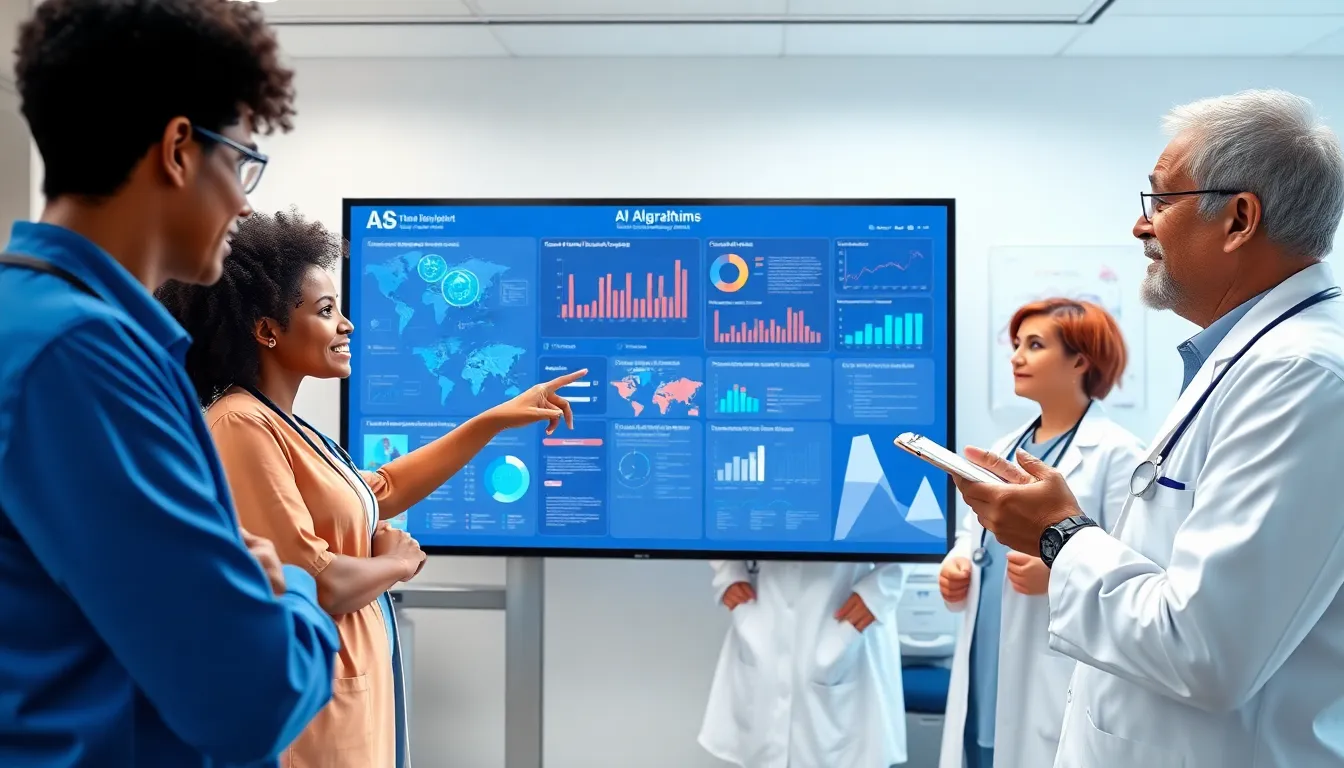In a world where farmers are battling unpredictable weather and rising costs, precision agriculture is like a superhero swooping in to save the day. Imagine a farming method that’s smarter than your average smartphone—one that uses cutting-edge technology to maximize yields while minimizing waste. It’s not just about planting seeds anymore; it’s about planting them with pinpoint accuracy and a sprinkle of tech-savvy magic.
With drones buzzing overhead and sensors digging into the soil, precision agriculture is transforming fields into data-driven dynasties. Farmers are trading in their guesswork for real-time insights, making decisions that are as precise as a surgeon’s scalpel. So buckle up, because this isn’t just a trend—it’s the future of farming, and it’s here to stay. Let’s dig deeper into how precision agriculture is reshaping the landscape and why every farmer should consider joining the revolution.
Table of Contents
ToggleOverview of Precision Agriculture
Precision agriculture represents a revolutionary shift in farming practices. This approach uses technology to optimize field-level management regarding crop farming. Farmers utilize tools like drones, GPS-guided equipment, and soil sensors to gather real-time data on various factors like soil moisture and nutrient levels. Enhanced crop yields occur through these informed decisions based on precise information.
Technology integration plays a crucial role in this agricultural model. Variables such as weather data and crop health metrics contribute to improved decision-making processes. Adoption rates for precision agriculture continue to rise, as shown by the market’s projected growth, expected to reach $12 billion by 2027. Benefits directly linked to this practice include resource efficiency, reduced operational costs, and increased profitability.
Data collection methods vary widely across farms. Some farmers rely on satellite imagery, while others employ ground-based sensors. Comprehensive data analysis enables targeted interventions, minimizing waste and promoting sustainable practices. For instance, applying fertilizers only where needed conserves resources and boosts soil health.
Collaboration among stakeholders strengthens the impact of precision agriculture. Farmers, agronomists, and technology providers work together to refine practices and optimize outputs. Ongoing education is essential, as training programs help farmers understand and implement these tools effectively.
Precision agriculture embodies a progressive approach to farming. By relying on data-driven insights, farmers can enhance productivity and sustainability, making this technology an invaluable asset in modern agriculture.
Key Technologies in Precision Agriculture

Precision agriculture relies on several key technologies that significantly enhance farming efficiency. These innovations facilitate data-driven decisions, leading to increased productivity and sustainability.
GPS and GIS Technologies
GPS technology allows farmers to pinpoint specific locations within their fields accurately. This capability enables the use of Geographic Information Systems (GIS) to create detailed maps of soil properties. Farmers analyze these maps to tailor their practices, applying resources like seeds and fertilizers with precision. Such targeted applications help optimize yields while minimizing waste. Moreover, real-time tracking aids in field monitoring and management, ensuring timely interventions.
Drones and Remote Sensing
Drones equipped with high-resolution cameras capture detailed aerial images of crops. These images provide insights into plant health, moisture levels, and growth patterns. Remote sensing technology allows farmers to analyze crop conditions from above, identifying areas needing attention. Using this data, farmers can implement timely actions, such as irrigation or pest control, enhancing crop health and conserving resources. Drones also reduce the time spent on field assessments, making monitoring efficient and cost-effective.
IoT and Sensors
IoT devices and sensors play a critical role in precision agriculture by providing real-time data on various soil conditions. Soil moisture sensors, for instance, monitor moisture levels, allowing farmers to irrigate when necessary. This proactive approach conserves water, reducing costs and environmental impact. Additionally, IoT technology enables the integration of weather data, enhancing decision-making processes. Overall, sensors empower farmers to respond quickly to changing conditions, improving overall farm management and productivity.
Benefits of Precision Agriculture
Precision agriculture offers significant advantages that contribute to enhanced farming practices and outcomes. This approach prioritizes using technology to optimize resources, improve productivity, and foster sustainability.
Increased Crop Yields
Farmers experience increased crop yields through precise data analysis. Monitoring soil conditions, moisture levels, and nutrient availability yields actionable insights. With better-informed decisions, farmers can apply fertilizers and pesticides more effectively. This targeted resource application leads to healthier crops and improved harvest quality. Data-driven methods replace traditional trial-and-error practices, increasing both the quantity and quality of outputs. Studies indicate that adopting precision agriculture can improve yields by 10% to 20%, making it a critical strategy for modern farming.
Resource Efficiency
Resource efficiency represents another vital benefit of precision agriculture. Automated technologies minimize waste by applying inputs only where and when needed. Sensors and IoT devices enable real-time monitoring of field conditions, optimizing water usage during irrigation. Efficient resource allocation lowers operational costs, which can significantly impact a farm’s profitability. Furthermore, reduced chemical runoff enhances environmental sustainability, supporting healthier ecosystems. By utilizing data effectively, farmers can use 20% to 40% less water, contributing to conservation efforts and ensuring long-term agricultural viability.
Challenges and Limitations
Precision agriculture faces several challenges and limitations that can hinder its widespread adoption and effectiveness.
High Initial Costs
High initial costs pose a significant barrier to implementing precision agriculture. Investment in advanced technologies, like drones and soil sensors, requires substantial capital. Many farmers experience difficulty affording these technologies upfront. The cost of GPS-guided equipment often discourages smaller farms from adopting these practices. Financial constraints can limit access to training and support resources necessary for effective implementation. Consequently, these factors may prevent some farmers from realizing the potential benefits of precision agriculture.
Data Management Issues
Data management issues frequently arise in precision agriculture, impacting decision-making processes. Farmers collect vast amounts of data, including soil moisture levels and crop health metrics. Managing this data effectively can be overwhelming for those unfamiliar with technology. Ensuring data accuracy remains critical, as incorrect data can lead to poor decisions that affect crop yields. Integration of various data sources can prove challenging, making it difficult to generate actionable insights. As a result, farmers may struggle with data overload, hindering the optimization potential of precision agriculture.
Future Trends in Precision Agriculture
Emerging trends in precision agriculture focus on enhancing efficiency and maximizing yields. Artificial intelligence (AI) increasingly plays a role by providing advanced data analysis. AI-driven algorithms enable predictive analytics, allowing farmers to anticipate crop issues before they arise.
Vertical farming systems gain traction as urban agriculture becomes more prevalent. These systems, which use controlled environments, reduce the dependency on traditional farmland and minimize water usage. They offer the potential for high-density crop production within cities.
Data integration stands out as a means to streamline operations. Farmers are adopting platforms that consolidate various sources of data, such as weather forecasts and market trends. A unified data approach facilitates better decision-making and resource allocation.
Robotics and automation are also on the rise. Robotic systems can perform tasks like planting, weeding, and harvesting with precision. This technology helps alleviate labor shortages while improving efficiency.
Remote sensing technology advances, enhancing crop monitoring capabilities. Satellite imagery and drones provide real-time insights into plant health and soil conditions. Owners of large farms benefit from the ability to address issues promptly and effectively.
Sustainability initiatives are becoming more central to farming practices. Utilizing precision agriculture techniques can significantly reduce inputs, such as water and fertilizers. Reports indicate reductions of 20% to 40% in water usage, aligning with environmental goals.
Blockchain technology offers a path toward transparency in food supply chains. Implementing this technology can enhance traceability, ensuring that consumers know where their food originates. Trust in food systems strengthens as a result.
These trends in precision agriculture showcase a future where technology enhances productivity while promoting sustainability. Embracing change remains crucial for farmers looking to thrive in an evolving landscape.
Conclusion
Precision agriculture stands at the forefront of modern farming practices. By leveraging advanced technology and data-driven insights, it empowers farmers to optimize their operations and enhance productivity. The shift towards this innovative approach not only promises increased yields but also fosters sustainability in agriculture.
As the industry continues to evolve, embracing precision agriculture becomes essential for farmers aiming to thrive in a competitive market. The integration of emerging technologies will further refine practices, ensuring that agriculture remains resilient and efficient. By adopting these advancements, farmers can navigate challenges and position themselves for success in the ever-changing agricultural landscape.





